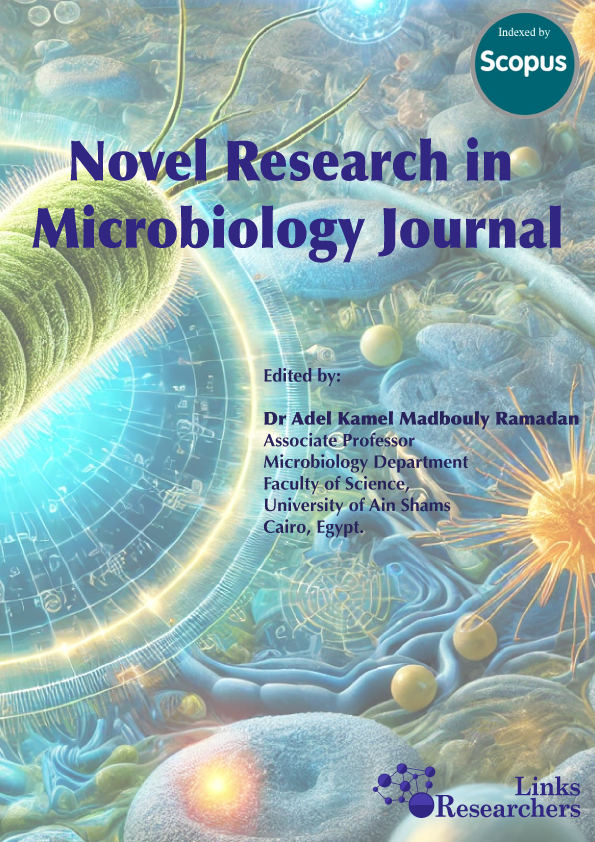Chemical and biological assessment of Alternaria alternata as an endophytic fungus isolated from Thymus vulgaris
Novel Research in Microbiology Journal (2024), 8(6): 2750-2771
Chemical and biological assessment of Alternaria alternata as an endophytic fungus isolated from Thymus vulgaris
Aml Ghanem1,2; Ahmed A. Al-Karmalawy3,4; Noha E. Morsy5; Mahmoud Elsabahy6; Ahmed M. Rayan2,7*
ABSTRACT
Thymus vulgaris is a highly regarded herb known for its wide medicinal and culinary uses. Endophytic fungi, residing harmlessly within plant tissues, have attracted much attention as potential sources of novel bioactive compounds. This study aimed to evaluate the chemical and biological characteristics of Alternaria alternata as an endophytic fungus isolated from Thymus vulgaris. Alternaria alternata was isolated from Thymus vulgaris leaves and characterized using morphological and molecular identification techniques. Chemical characterization of dichloromethane fraction (DCM) of Alternaria alternata was conducted using Liquid Chromatography-Mass Spectrometry (LC-MS). The biological screenings revealed anticancer potential of the fungal secondary metabolites, while DCM extract showed strong antimicrobial activity against Escherichia coli and Pseudomonas aeruginosa compared to gentamycin. These findings imply that DCM extract has the potential as an alternative or complementary antibacterial agent; particularly in situations where antibiotic resistance is a concern. DCM extract exhibited moderate cytotoxicity with an IC50 of 70 μg/ ml compared to the more potent Doxorubicin with an IC50 of 10 μg/ ml. This suggests that Alternaria alternata extract may offer a less aggressive alternative for cancer therapy. Docking results revealed that key secondary metabolites such as dihydroaltersolanol showed strong binding activity across multiple bacterial targets; suggesting their broad-spectrum antibacterial potential, while Bicycloalternarene F demonstrated specific high affinity for 3-hydroxy-3-methylglutaryl- coenzyme. Alternatone A, tenuazonic acid, and A reductase expressed strong multi-target antibacterial potential, while Bicycloalternarene F and Alternatone A displayed high binding affinity to several anticancer targets; particularly those proteins regulating apoptosis and cell survival. These findings highlighted the potential of these bioactive compounds as effective anticancer agents and warranting further experimental validation.
To share on other social networks, click on any share button. What are these?





